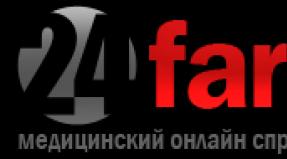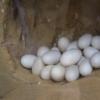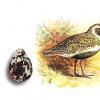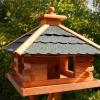When is the feast of 40 saints. Feast of Magpies (40 saints) - signs, divination, folk customs. What does the Feast of the Forty Saints mean?
On March 22 (March 9 according to the Julian calendar) the Orthodox Church celebrates a special holiday dedicated to the memory of the Martyrs of Sebaste. saints - the feast of all Orthodox Christians. He is one of the most revered and beloved by all believers. On this day, the solemn Liturgy of the Presanctified Gifts is performed. 40 saints is a holiday that usually falls during strict fasting, when dry eating (bread, fruits and vegetables) is allowed.
history of the holiday
In 313, Constantine the Great, the first Christian Roman emperor, having come to power, immediately issues a decree that all Christians are given the opportunity of free religion. This meant that their rights were equalized on a par with pagans. Thus legalized Christianity. And in general, he began to contribute in every possible way to its growth and prosperity. However, his co-ruler, whose name was Licinius, was an inveterate pagan, in his part of the Roman Empire, on the contrary, he tried in every possible way to eradicate Christianity, because it began to spread on a special scale in his lands. Therefore, Licinius, out of fear of treason, began to prepare for war and began to clear his troops of Christians.
40 saints - a holiday of Orthodox Christians
A courageous detachment of 40 soldiers was from Cappadocia (modern Turkey), was part of the Roman army, which was in the city of Sebastia. Once the pagan commander Agricolaus ordered these valiant Roman soldiers to renounce Christ and offer sacrifices. But they refused to do this, and then they were put in prison, in which they began to pray fervently. And then the soldiers heard the voice of God: "He who endures to the end, he will be saved." In the morning they were again forced to renounce the Christian faith, but this time they did not obey, and again they were thrown into prison.

Torture for the Faith of Christ
A week later, an important dignitary Lysias arrived in Sevastia, who decided to arrange a trial for strong-willed warriors. He ordered them to be stoned, but for some reason the stones flew past the soldiers. Then Lysias himself threw a stone at them, and hit Agricolaus right in the face. It was then that the tormentors realized that some invisible force was protecting the fearless warriors.
Praying incessantly in prison, the martyrs again heard the voice of the Lord, who consoled them and said: “He who believes in me, if he dies, will live. Be of good cheer and be not afraid, and you will receive incorruptible crowns.” The interrogations were repeated every day again and again, and always the servants of the Christian faith were adamant.
There was a severe frost outside, and then the martyrs were prepared for new tortures. They were first undressed, and then driven into an icy lake for the whole night, and a bathhouse was heated nearby on the shore in order to break the will of the martyrs in this way. After midnight, one of the soldiers nevertheless gave up and ran to warm himself in the bathhouse, but, having crossed its threshold, he immediately fell dead.

fortieth warrior
By three o'clock in the morning, the Lord sent warmth to the martyrs, it brightened all around, the ice melted, and the water became warm. At this time, all the guards were fast asleep, except for one - Aglaia. Seeing that a bright crown appeared over the head of each martyr, and counting 39 of them, he decided that the runaway warrior was left without a crown, and then he decided to join the holy martyrs.
Waking up the guards, he announced to them that he was a Christian. But the torture didn't end there. After that, the staunch warriors broke their knees. When they all died, their bodies were loaded onto carts and taken to be burned. But one of the soldiers named Meliton was still alive, and the guards left him, but the mother took the body of her son, dragged it to the cart, and then laid him next to the other martyrs. The bodies of the holy martyrs were then burned, and the remains of the bones were thrown into the water so that no one could collect them. Three days later, at night, the holy martyrs appeared to the Bishop of Sebaste, blessed Peter, and ordered them to collect their remains and give them to burial. The bishop, together with his assistants, collected the remains at night and buried them with all honors and prayers.

40 saints: holiday, omens. What Not to Do
On this day, you should not be lazy, but it is better to prepare well for the meeting of spring and appease it with your culinary pastries. On the feast of 40 saints, the signs are quite interesting and original. It is believed that on this holiday winter ends and spring comes. Very often this day coincides with It is also called Sorochintsy, Magpies, Larks, because after the winter wandering from the south they fly to us and bring spring with them. If we talk about signs, then on this day gardeners can get an answer to when you can start planting seedlings.
On the feast of 40 saints, signs are mainly related to the weather. So, on this day you can judge the weather for the next 40 days. If it is frosty, then this weather will last another 40 days. If birds arrive, then this is an early warmth. But if not a single rain fell from the Presentation to Soroki, then the summer will be dry.
40 saints - a holiday that used to be celebrated like this: it was customary to bake 40 buns and cookies in the form of larks with open wings on this day. According to tradition, they were distributed to children so that they would invite spring with fun and jokes. This is also done so that the bird in the household On this day, girls who dream of marriage cook forty dumplings and treat them to guys.
In general, Orthodox people love festivities and fun on this day. 40 Saints is a holiday that once again reminds us of how important faith is for every person and what torments true Christians are ready to endure for it.
In 313, Saint Constantine the Great issued a decree according to which Christians were allowed freedom of religion and they were equal in rights with pagans. But his co-ruler Licinius was a convinced pagan and in his part of the empire decided to eradicate Christianity, which had spread significantly there. Licinius was preparing for a war against Constantine and, fearing treason, decided to purge his army of Christians.
At that time, in one Armenian city of Sebastia, one of the commanders was Agricolaus, a zealous supporter of paganism. Under his command was a squad of forty Cappadocians, brave warriors who emerged victorious from many battles. All of them were Christians. When the soldiers refused to sacrifice to the pagan gods, Agricolaus imprisoned them. The warriors indulged in fervent prayer, and one night they heard a voice: “He who endures to the end, he will be saved.”
The next morning, the soldiers were again brought to Agricola. This time the pagan used flattery. He began to praise their courage, youth and strength, and again invited them to renounce Christ and thus win the honor and favor of the emperor himself. Again hearing the refusal, Agricolaus ordered the soldiers to be chained. However, the eldest of them, Kirion, said: "The Emperor did not give you the right to impose shackles on us." Agricolaus was embarrassed and ordered the soldiers to be taken to the dungeon without fetters.
After 7 days, a noble dignitary Lysias arrived in Sevastia and arranged a trial for the soldiers. The saints answered firmly: “Take not only our military rank, but also our lives, for us there is nothing more precious than Christ God.” Then Lysias ordered that the martyrs be stoned. But the stones flew off target; the stone thrown by Lysias hit Agricolaus in the face. The tormentors realized that some invisible force was protecting the Saints. In prison, the soldiers spent the night in prayer and again heard the voice of the Lord comforting them: “He who believes in me, even if he dies, will come to life. Be of good cheer and be not afraid, for you will receive incorruptible crowns.”
The next day, the trial and interrogation before the tormentor was repeated, but the wars remained adamant.
It was winter, it was very cold. The holy warriors were undressed, taken to a lake not far from the city, and placed under guard on the ice all night. To seduce the martyrs, a bath was set up on the shore. In the first hour of the night, when the cold reached extreme ferocity and the bodies of the saints were iced over, one of the forty could not stand the feat and ran to the bathhouse. But as soon as he stepped on its threshold and felt the warmth, he immediately fell and died. Seeing this shameful flight, the holy martyrs began to pray fervently that the Lord would strengthen them.
 At the third hour of the night, the Lord sent consolation to the martyrs: suddenly it became light, the ice melted, and the water in the lake became warmer. At this time, those who were guarding the martyrs were sleeping, only one prison guard, Aglaius, was awake. He pondered over what he had seen: the one who separated from the martyrs immediately perished, while the rest, in the bitter cold, remained alive and unharmed. Struck by the light that shone on the holy martyrs, he lifted his head up and saw 39 bright crowns that fell on the heads of the sufferers. Surprised that there were not 40 of them, according to the number of those who suffered, but 39, he realized that he was missing one crown, because he who fled to the bath was rejected from the face of the saints. He immediately woke up the sleeping guards, threw off his clothes and, in front of everyone, ran into the lake, exclaiming: “And I am a Christian!” Standing in the water, he prayed: “Lord God, I believe in You, in whom these soldiers believe. Join me with them, so that I may be able to suffer with Your servants.
At the third hour of the night, the Lord sent consolation to the martyrs: suddenly it became light, the ice melted, and the water in the lake became warmer. At this time, those who were guarding the martyrs were sleeping, only one prison guard, Aglaius, was awake. He pondered over what he had seen: the one who separated from the martyrs immediately perished, while the rest, in the bitter cold, remained alive and unharmed. Struck by the light that shone on the holy martyrs, he lifted his head up and saw 39 bright crowns that fell on the heads of the sufferers. Surprised that there were not 40 of them, according to the number of those who suffered, but 39, he realized that he was missing one crown, because he who fled to the bath was rejected from the face of the saints. He immediately woke up the sleeping guards, threw off his clothes and, in front of everyone, ran into the lake, exclaiming: “And I am a Christian!” Standing in the water, he prayed: “Lord God, I believe in You, in whom these soldiers believe. Join me with them, so that I may be able to suffer with Your servants.
In the morning the tormentors came, and seeing that the saints were alive and had not suffered from the cold, they attributed all this to magic. They were surprised that a prison guard was among them and fell into a rage. The holy martyrs were sentenced to be taken out of the lake and subjected to a new torture - to break their shins with hammers.
During this painful execution, the mother of the youngest of the warriors, Meliton, urged her son not to be afraid and endure everything to the end. The bodies of the martyrs were placed on chariots and taken to be burned. Young Meliton was still breathing, and they left him lying on the ground. Then the mother picked up her son and carried him on her shoulders after the chariot. When Meliton breathed his last, his mother placed him on a chariot next to the bodies of his holy companions.
But when the fire burned to the ground, the bones of the holy martyrs remained intact. But the tormentors did not calm down, fearing that Christians would worship the holy relics, they decided to throw them into the river. The Lord kept all the bones of the martyrs intact in the water.
After three days, the holy martyrs appeared to the Bishop of the city of Sebaste, Peter, and said to him: “Come at night and carry us out.” The blessed bishop, with reverent men from his clergy, came to the bank of the river on a dark night. There they saw a marvelous sight: the bones of the saints shone in the water like stars, and those places in the river where their smallest particles lay also shone. The Bishop collected every single bone and their particles and placed them in a worthy place.
The names of the martyrs have been preserved: Kirion, Candide, Domnus, Hesychius, Heraclius, Smaragdus, Eunoikus, Valens, Vivian, Claudius, Priscus, Theodulus, Eutychius, John, Xanthius, Ilian, Sisinius, Haggai, Aetius, Flavius, Akakiy, Ekdekiy, Lysimachus, Alexander, Eli, Gorgonius, Theophilus, Domitian, Gaius, Leonty, Athanasius, Cyril, Sakerdon, Nicholas, Valery, Filiktimon, Severian, Khudion, Meliton and Aglai.
The memory of the holy 40 martyrs in all the most ancient hymns belonged to the circle of the most revered feasts and commemorations of saints. According to the Charter, the service includes 2 canons. On the day of their memory, the severity of fasting is eased - it is allowed to eat wine and even oil, and it is instructed to certainly celebrate the Liturgy of the Presanctified Gifts.
Related materials
Over a million hryvnias collected for Great Lent for children with cancer in Sumy region
The Magpie folk holiday is celebrated on March 22, 2020 (March 9 according to the old style). In the Orthodox church calendar, this is the date of honoring the memory of the 40 martyrs of Sebaste.
Story
In the winter of 320, 40 Christian soldiers from Rome stood in Sebastia (Armenia). Seven years ago, a law on free religion was signed, but the soldiers were repeatedly forced by their commander to renounce the Christian faith.
On that winter day, the warriors were stripped, tied up and placed on an ice-covered lake. A bathhouse was built on the shore so that the warm air would tempt them. Those who wished to end their suffering and warm themselves had only to tell the watchman that they were renouncing Christ. All night the men supported each other and did not let them lose heart.
In the predawn hour, one unfortunate man could not stand it and headed for the shore. As soon as the hot air touched his skin, he fell dead. At the same moment, a light of unearthly beauty spilled over the rest of the martyrs. This miracle shocked the watchman. He resolutely undressed, stepped onto the ice and joined the martyrs.
The commander saw that the soldiers did not despair and did not give up. Their knees were broken, they were burned, and the remains were thrown into the water. The incident became known three days later. The images of the sufferers appeared before the Bishop of Sebaste and told about everything. He found and buried with honors their bones.
Traditions and rituals
On this day, they pray to the forty Martyrs of Sebastia so that their relatives or friends can safely complete their military service.
March 22 is considered by people to be the second meeting of spring, when 40 species of birds return from warm countries, including the lark. In honor of him, housewives prepare honey-covered rye or oatmeal buns in the form of birds. The treat is distributed to the children, who ask the lark to hurry up the heat.
If on March 22 there was a morning frost, they say that Magpies began - forty frosty days. So that the cold does not beat the crops, you need to bake the same number of balls-koloboks from oatmeal or rye flour. Starting from the festival of Magpies, it is necessary to throw them out into the street one a day.
Signs
If the frosts last for forty days, then the summer will be warm.
What is the weather on Soroca, it will be like this for another 39 days.
Thunder is heard - to the hungry year.
Jackdaws and magpies are found in large numbers, which means it will soon be warm.
According to the new style, Orthodox Christians celebrate the feast of the Forty Saints or, as it is also called, the Day of the Forty Holy Martyrs of Sebaste.
What does the Feast of the Forty Saints mean?
The history of the feast of the Forty Saints originates from early Christianity. In 313, in some parts of the Holy Roman Empire, the Christian religion was already legalized, and the persecution of believers ceased. However, this was not the case everywhere. In Sebastia, which was on the territory of modern Armenia, the emperor Licinius ordered to purge the army ranks from Christians, leaving only pagans. The ardent pagan Agricoli served in Sebastia, and under his command were forty warriors from Cappadocia who professed Christianity. The commander demanded from the soldiers that they confirm their devotion to the pagan gods, but they refused to do this and were imprisoned. There they diligently indulged in prayers and heard the voice of God, which encouraged them and admonished them not to humble themselves before trials. The next morning, Agricoli tried to break the soldiers again, resorting to all sorts of tricks and flattery, glorifying their military exploits and persuading them to return to the pagan faith in order to gain freedom. Forty Cappadocians again firmly endured the test, and then Agricoli ordered them to be closed again in prison.
A week later, a dignitary Lysias arrived in Sebastia, who interrogated the soldiers, but after they again refused to swear allegiance to the pagan gods, he ordered the Cappadocians to be stoned. However, the stones miraculously did not hit the soldiers, scattering in different directions. The next test, which was supposed to break the resistance of the Sebastian martyrs, was standing naked on the ice, to which Lysias doomed them. To make it even more difficult for the soldiers, a bathhouse was heated not far from the river. At night, one of the Cappadocians could not stand it and ran to the hot unheated hut, however, only after crossing its threshold, he fell dead. Others steadfastly continued to stand on the ice. And again a miracle happened. The Lord spoke to the Sebastian martyrs, and then heated everything around them, so that the ice melted and the water became warm.
One of the guards - Aglaliy, who was the only one who did not sleep at that time, having seen a miracle, exclaimed: "And I am a Christian!" and stood in line with the Cappadocians.
Arriving at the river in the morning, Agricoli and Lysias saw that the soldiers were not only alive and not broken, but one of the guards was standing among them. Then they ordered that their shins be broken with a hammer so that they would die in agony. Later, the bodies of the Sebastian martyrs were burned and the bones were thrown into the river. However, the Bishop of Sevastia, blessed Peter, at the direction of God, was able to collect and bury the remains of the holy soldiers.
Signs of the Feast of the Forty Saints
The meaning of the Forty Saints is that a true believer does not doubt his faith, and then she saves him, even if he has to suffer or even accept a painful death. A true Christian must be firm in his convictions and not deviate from them in any situation.
On this day, it is customary to remember the forty Cappadocian soldiers who gave their lives for their faith in God. In honor of them, Orthodox families bake a special treat - buns in the shape of larks. These birds and their flight are associated among Christians with the behavior of the martyrs of Sebaste. The bird boldly flies up to the sun, but humbles itself before the greatness of the Lord God and dives sharply down. So the Forty Holy Martyrs, resigned to an inevitable and terrible death, were able to ascend to the Lord and receive His grace.
In 313, the holy emperor Constantine the Great granted Christians freedom of religion. But power in many provinces still belonged to the pagans, the persecutors of Christians. So it was in the province of Armenia, located on the territory of modern Turkey. Here, in the city of Sevastia, the zealous pagan Agricolaus commanded the garrison. And in the winter of 320, he ordered all his soldiers to make sacrifices to idols. Forty people refused, declaring that they were Christians and worshiped only the true God, and not idols.
Forty Martyrs of Sebaste. Fresco from the 12th century in the Church of Panagia Forvietisa in Asinu. Cyprus. Photo by Igor Samolygo
At first, Agricolaus persuaded them, promised promotion, money. Then he began to threaten with prison and shameful death. But the soldiers rejected all the promises and threats, and then the ruler imprisoned them. The prisoners prayed earnestly and at night they heard a voice: “He who endures to the end will be saved.”
A week later, a noble dignitary Lysias arrived in the city and ordered the Christian soldiers to be stoned. But the stones flew off target; a stone thrown by Lysias himself hit Agricolaus in the face. The embarrassed tormentors returned the prisoners to the prison to think about what to do with them. At night in prison, the soldiers again heard the comforting voice of the Lord: “He who believes in me, even if he dies, will live. Be of good cheer and be not afraid, for you will receive incorruptible crowns.”
The next day, the soldiers were led bound to a lake near the city of Sevastia. That day it was very cold. The soldiers were ordered to undress and put directly into the icy water. And on the shore a bath was heated, and the tormentors said that any of them could immediately warm themselves in it if they renounced Christ. All night the warriors courageously endured the cold, encouraging each other. They sang hymns despite the pain of frostbite. And this flour is comparable in strength to fire burns. One of the soldiers, after several hours, could not stand it, ran ashore, to the bathhouse. But as soon as he entered the threshold of a hot bath, due to a sharp temperature drop, his skin and flesh began to separate, and he died.
The night continued, and the guards guarding the place of torment fell asleep. Only one of them, Aglaius, could not sleep. He was amazed: how can these Christians, despite unheard-of torment, not stop praying? At three o'clock in the morning he saw that a bright light was spreading over the lake, just like in summer. It got so warm that the ice melted. Aglaius was perplexed: what is happening? Looking up, he saw luminous crowns above the heads of the warriors. There were thirty-nine crowns - according to the number of remaining staunch martyrs. Then Aglaius threw off his clothes, shouted, waking up the other guards: “And I am a Christian!” and ran to the martyrs. He prayed: “Lord God, I believe in You, in whom these soldiers believe. Join me with them, so that I may be able to suffer with Your servants.
In the morning the chiefs of the tormentors returned and saw that the soldiers were still alive, and in addition one of the jailers was among them! In a rage, Lysias and Agricolaus ordered the shins of the martyrs to be broken with hammers in order to make the suffering unbearable. But even dying from torment, the soldiers did not stop praying and glorifying the True God.
Lysias ordered the remains of the soldiers to be destroyed so that Christians would not venerate the relics of the new martyrs. The bodies of the saints were burned at the stake, and the bones were thrown into the river. Three days later, the martyrs appeared in a dream to Bishop Peter of Sebaste and ordered him to take the bones from the river. The bishop with several priests secretly came to the river at night. O miracle: the bones of the martyrs shone in the water like stars! Christians collected the remains of the saints and buried them with honor.
It has long been a custom in Russia on the day of remembrance of the Martyrs of Sebaste. Why larks?

The peasants, paying attention to the fact that the singing lark sometimes soars up, then “falls” like a stone to the ground, explained this by the special boldness and humility of these birds before God. The lark quickly rushes upward, but, amazed by the majesty of the Lord, bows down in deep reverence. So the larks, according to the thought of our pious ancestors, depicted a song of glory to the Lord, lifted up by the martyrs, their humility and aspiration upward, to the Kingdom of Heaven, to the Sun of Truth - Christ.
The Forty Martyrs of Sebaste is a non-transferable holiday, traditionally celebrated on the same day - March 22 (new style). If the day of the feast of the Forty Martyrs of Sebaste coincides with Wednesday of the Cross, it can be postponed, as happened in 2017. Previously, in pre-Christian Russia, this day was considered the final date for the beginning of spring. Then they also baked larks, but they put a completely different meaning into baking, there were different traditions and “calls” of spring, when it was called in the hope that heat would come as soon as possible. The church does not celebrate the vernal equinox, but this day has a new Christian meaning. And the lark began to symbolize the soul that aspires to God and bows before the greatness of the Creator. Therefore, the people love the feast of the Forty Martyrs of Sebaste so much, who endured all the torment to the end and accepted death, so as not to betray Christ. On the day of the Forty Martyrs of Sebaste, the Liturgy of the Presanctified Gifts is served.
Names of the Forty Martyrs of Sebaste: Kirion, Candide, Domnus, Hesychius, Heraclius, Smaragd, Eunoikus, Ualens (Valens), Vivian, Claudius, Priscus, Theodulus, Eutychius, John, Xanthius, Ilian, Sisinius, Angius, Aetius, Flavius, Akakiy, Ekdikiy, Lysimachus, Alexander , Eli, Gorgonius, Theophilus, Dometian, Gaius, Leonty, Athanasius, Cyril, Sakerdon, Nicholas, Walery (Valery), Philoctimon, Severian, Khudion, Meliton and Aglaius.



















